Text
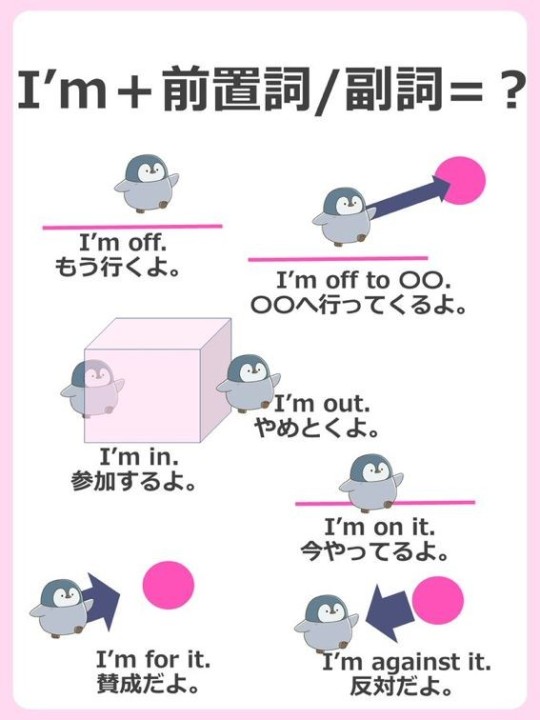
#japanese#japan#japanese vocab#learning japanese#manga#langblog#tumblr language#langblr#japanese vocabulary
219 notes
·
View notes
Text

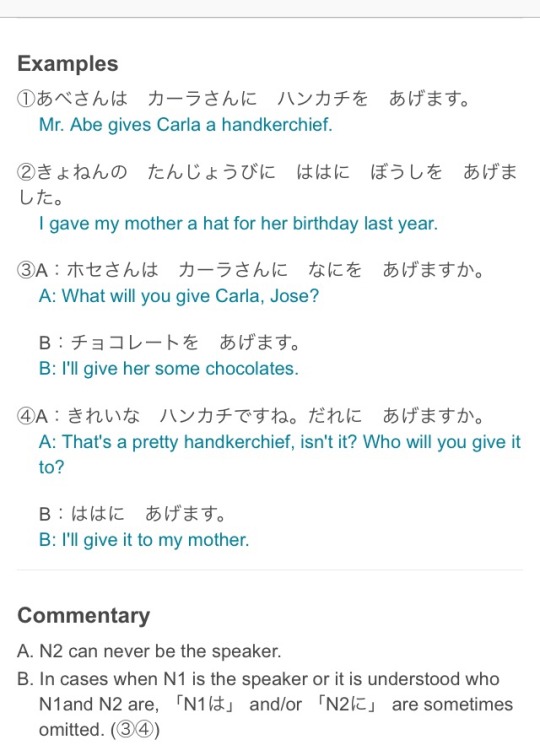

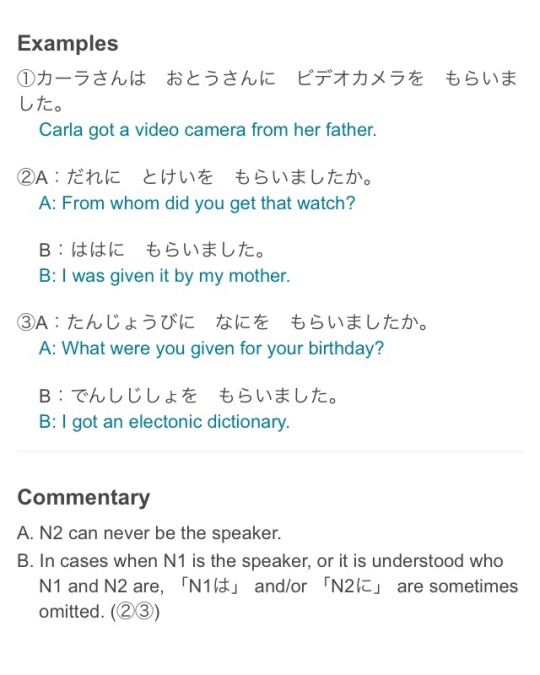
Marugoto notes on giving and receiving
767 notes
·
View notes
Text

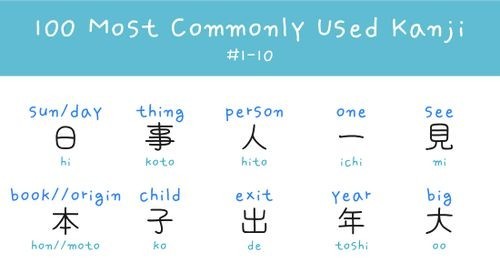





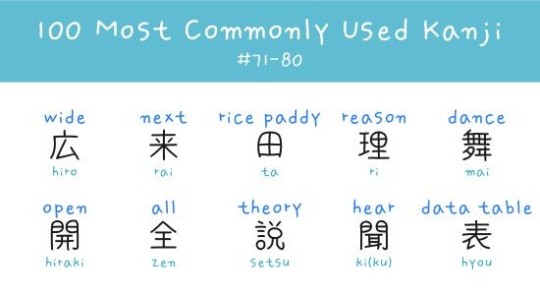
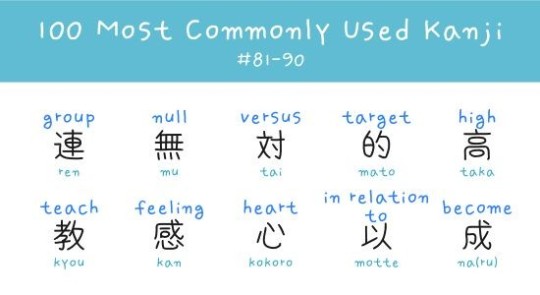
☁️💙 A kanji dump💙☁️
2K notes
·
View notes
Text
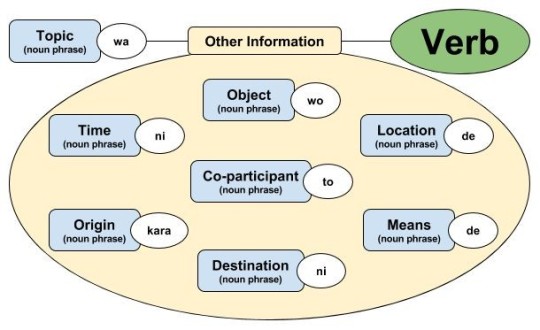
282 notes
·
View notes
Link
Last time, you learned how to make subjects of Japanese verbs with the particles が and は: 雨が降る (new information) and 雪は降らない (contrast). In this lesson, you will learn how to make objects of Japanese verbs by using the particles: を, に, and と.
54 notes
·
View notes
Text
あいづち
Paying attention in Japanese
When talking with Japanese people, in English or Japanese, you might notice that they frequently nod or interject something like はい or yes frequently while you are talking. This participatory style of communication characterizes spoken Japanese. With あいづち (aizuchi) or short interjections, the listener is letting you know that they are following you.
If the listener doesn’t show any reaction during a conversation, a Japanese person might feel uneasy and stop and ask if you understand. In some cases they may repeat what they said if they assume you don’t follow the conversation. Over the telephone this might happen if the listener doesn’t respond enough, with the speaker asking もしもし? to see if the listener is still there.
あいづち is an important part of Japanese conversation, and even if it seems strange at first, with enough practice it will become second nature.
Examples of あいづち
はい (does not necessarily mean “I agree” when used as あいづち; formal)
ええ (less formal than はい)
うん (more casual than はい and ええ; sounds closer to a short, hard “mm” sound in English)
ああ (”ah, I see”; less formal)
へえ (”no way”; casual)
そうですか (”is that so?”; formal)
そうですね (”I see”; less formal)
そうっか (”I see”; casual)
そう (”I see”; casual)
そうなんですか (”oh really?”; expresses with extra emphasis)
ほんとうですか (”is that true?”; formal)
ほんとうに (”oh really?”; less formal)
マジ (”really?”; casual)
なるほど (”I see”, “that’s right”; formal)

You can always start with a nod (in person of course) to show the speaker that you’re listening, or interject a friendly はい when the speaker pauses (Japanese people will do this because they are used to receiving あいづち). Then start throwing in a new one each time you have a conversation and you’ll be on your way to becoming an あいづち natural!
#interjections#talking#reference#japanese#日本語#japanese language#japanese langblr#langblr#studyblr#conversational interjections in japanese#speaking japanese#あいづち#相槌
988 notes
·
View notes
Text
Japanese Resources
Essentials
Rikaisama - Pop-op Dictionary - based on Rikaichan
Yamasa.cc - Learn Handwritten Stroke Order
Anki - Spaced Repetition Software
Japanese Stack Exchange - Ask Questions, Get Answers
Dictionary Codes and Meaning - ex: v4k, vi
Chinese and Japanese Characters Mnemonics - Stroke Orders, Lists, Study Sheets
A better Japanese font for Windows web browsers
Verb Conjugation Chart - gaoshukai
Similar Kanji Lookup
Dictionaries
Jisho.org
Tangorin - English⇆Japanese Online Dictionary
Honyaku Star - Simple and Fast Dictionary | No ローマ字 | Specifically for Translators
JLect - Japanese Dialect Word Search
TMdict - vocabularies from games, books, anime, and other works by Type-Moon.
Kanji Alive_ Web App - Kanji Lookup, Stroke Orders, Examples, Picture Mnemonics
Kanji Dictionary - 漢字辞典
Etymologies - A comprehensive, illustrated dictionary with etymologies, pictographs & definitions in English and Japanese
More Eymologies - Traditional & Simplified CH/JP
Oichan’s Dictionary - CN/JP/EN Dictionary
Proverb Dictionary - Dutch, English, and Japanese
語源由来辞典 - Etymology Dictionary
平明四字熟語辞典 - 4-Character Idiomatic Compound Dictionary
故事ことわざ辞典 - Proverb Dictionary
日本語俗語辞書 - Colloquial Language Dictionary
日本語コロケーション辞典
IT用語辞典 e-Words - Internet and Technical Terms
三省堂 Web Dictionary - Sanseido
Weblio - 辞書 - Main Dictionary
Weblio - シソーラス - Thesaurus
Weblio 翻訳 - Translate
alc.co.jp - Another Great Dictionary
goo.ne.jp - Goo’s Dictionary
kotobank.jp - Uses yahoo.co.jp dictionary with a nice Interface
Tatoeba - Example Sentences
Tsukuba Corpus
複合動詞レキシコン - Compound Verb Lexicon
Yamasa.cc - Learn handwritten stroke order
kotoba.ne.jp - Extremely useful once you learn its capabilities
Excite.co.jp’s Dictionary with Pitch Accent
Software
Houhou SRS - Dictionary + SRS
Tagaini Jisho - Dictionary on each OS
zKanji - Another Dictionary + SRS
Capture2Text - Get Text from Manga and Other Images
JGloss - Automatically annotate Japanese text with readings and translations
KanjiTomo
aard
OmegaT - Translation Memory Tool
Foreign Language Text Reader
Learning With Texts
Language Tool - Proofreading/Spellcheck Program
Lingoes - Dictionary & Translation
StarDict
Wakan - Dictionary App for Chinese and Japanese
Thesauri
Goo.ne.jp’s Thesaurus
類語同義語辞典 - Quasi-synonym/synonym Dictionary
Learning the Language
Wanikani - Learn Kanji Through Spaced Repetition (Paid Subscription)
Japaneseclass.jp - Vocabulary and Kanji
Kapibara - Apps and Materials
U-biq - Japanese study
Japanese Stack Exchange - Ask Questions, Get Answers
Tae Kim’s Guide - Site for Complete Beginners
Chinese and Japanese Characters Mnemonics - With much more material
Japanese Parts of Speech - 日本語
Japanese Linguistics - General Terms, Parts of Speech, Particles, etc - General Linguistics
Loanwords - gaoshukai.com
Esaura - Q&A site dedicated to J<->E translation.
Lang-8 - Write Journals, Get Corrections from Natives (All Languages)
Japanese Reading Practice with Tanaka Corpus
Tips on Japanese
JLPT Study Materials
JLPT Vocabulary Lists
HiNative - Q&A
OnomatoProject - Practice Japanese onomatopoeia (擬音語) and mimetic words (擬態語) with examples and illustrations!
Grammar
Imabi - Lessons From Basic to Classical Japanese | Everything You Need for Grammar
Kanzen Grammar - Sentences broken down in detail
JGram - Japanese Grammar Database
Renshuu.org - Over 600 entries for Grammar
Jtest4you
Auxiliary Verb Chart
Radicals
Kanji Radical Names - 仮名 and ローマ字
214 Traditional Radicals - From Kanji Alive
Radical Names in Japanese - with kanji used
More Kanji Radicals
Kana
Rapid Recognition Trainer for Hiragana and Katakana
Multiple Font and Stroke Magnifier
Kana - Anomalous Cursive Syllabary
Advanced Learning
Mistakes & Differences Guide
Different Kanji With Same Reading and (Usually) Meaning
Slight Different Meanings
Read Your Level
Reading Material
Aozora Bunko - Japanese Project Gutenberg
Bauddha.net - Similar to Aozora
Children’s Reading Material - Fairy Tails
Reajer - Bilingual Texts & Frequently-updated Language Blog
Manga & Light Novels
Comico - Manga & Light Novels
Mangabox
Vomic - Manga with Voice (Mac users download VLC web plugin)
Kadokawa - Free Comics
Light Novels
Tueee
小説を読もう!
Anime
AniChart
Anime List
Hummingbird - MAL Alternative
Anime Recommendation Finder
Crunchyroll - Watch Anime Legally
Japanese Subtitles
News
SmartNews - Japanese Smartphone News App
SANSPO.COM(サンスポ)
NHKニュース and NHK Easy Version
朝日新聞 - Asahi and Children’s Edition
Japan Times
Japan Today
MATCHA and Easy Japanese Version - Japan Travel Magazine
Metropolis Magazine | Japan’s Number 1 English Magazine
Tokyo Weekender - English Magazine
Yomiuri, Children’s Edition, and English Edition
Easy News - Newsinslowjapanese.com
Nikkei
Sankei
Japanese Sign Language
ITEC
More Lessons
Dialect Study
JLect - Dialect Word Search
Osaka-Ben
Kansai-Ben
Kansaiben.com
Kansai-Ben Word List
Pitch Accent
U-Biq
Pitch Accent Diagram
Excite.co.jp’s Dictionary with Pitch Accent
OJAD Online Japanese Accent Dictionary
Recommended Books
White Rabbit Japan - Buy Things From Japan
- A Dictionary of Basic Japanese Grammar
- A Dictionary of Intermediate Japanese Grammar
- A Dictionary of Advanced Japanese Grammar
- Dictionary of Misused Japanese
- Kanji Dictionary - 1006 Kanji Picture Dictionary
- ALC’s Japanese for Business: Business Etiquette
J-LIST - Buys Things From Japan
- Handbook for Newcomers, Migrants and Immigrants to Japan - Bilingual
- Encyclopedia of Japan - Bilingual
Amazon
- The Kodansha Kanji Learner’s Dictionary: Revised and Expanded
- Kodansha’s Furigana Japanese Dictionary (Kodansha Dictionaries)
- The Kodansha Kanji Dictionary
- The Original Modern Reader’s Japanese-English Character Dictionary
- The New Nelson Japanese-English Character Dictionary
Culture & Life
AFA Channel - Japanese Pop Culture Video Channel
Becomming Legally Japanese - Information on Naturalization
Danny Choo - Culture Japan
Japan-guide - Your Guide to Japan
Japan Subculture Research Center - Yakuza and other cool culture information
Just Bento - Blog About Bentos
Just Hungry - Japanese Food & Recipes
néojapanisme
Spoon & Tamago - Japanese Art, Design, and Culture
What Japan Thinks - Surveys of Japanese People
Niponica - Free Multilingual Magazine in HTML, PDF, or E-Book
Nippon.com - Your Doorway to Japan
Music
JPop Asia - Asian Music Videos, Top Charts, Lyrics, & Forum
Kasi-time - Lyric Search
Utamap - Another Lyric Search
utaten - Lyrics with Furigana
Lyric Get - Copy Lyrics on Restricted Japanese Lyric Websites
Information
JLPT - Japanese Language Proficiency Test Information
JNTO - Japan National Tourism Organization
JET Programme - Japan Exchange and Teaching Programme
Japanese Language Schools - List of language schools in Japan
Society for Teaching Japanese as a Foreign Language
Scholarships
JASSO - Japan Student Services Organization
Benjamin A. Gilman International Scholarship Program - U.S. Citizens
Work
GaijinPot - Jobs and Other Information
Japan Today Jobs - International Jobs in Japan
Kansai Flea Market - Jobs, Classifieds
Metropolis Classifieds
O-Hayo Sensei - The Newsletter of (Teaching) Jobs in Japan
White Companies - Information
Wanikani Extensions
KaniWani - Reverse WaniKani
Duendecat - Sample Sentences from WaniKani Progress
WaniKani to Anki Exporter
Misc
Free Japanese Kana and Kanji Fonts
http://www.find-job.net/startup/
Convert Japanese Dates and Western Dates
Japanese History - Wikibooks
Japanese Ghost Stories - Hyakumonogatari
Reading Speed, Comprehension and Eye Movements While Reading Japanese Novels - Scholarly Article
Hinoki Project
何年.jp/ - Japanese 平成 (Heisei) Year Lookup
Math Symbols & Readings
Traditional Colors of Japan - With Hex Values
Color-sample - Colors in detail
Onomatopoeia Picture Game - in Japanese
Kanji Used in Important Documents
Free Beautiful Handwriting - Handwriting Practice Sheets with Your Own Data
17K notes
·
View notes
Photo
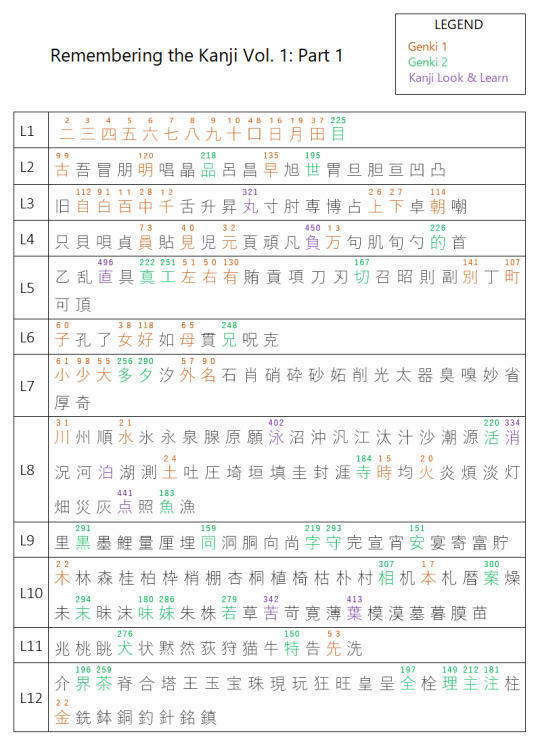
みんな、こんにちは!元気ですか。
最近、仕事は助かれているけど、漢字チャレンジを続けるのが頑張る!げんき1」のレッスン10をまだ始めなかった。週末に始めたい…頑張る!
とにかく、漢字チャレンジが好き!難しくてけど、楽しいも!
–
What I’ve been doing to learn how to recognize kanji:
1. Pick apart the kanji and break it down into its components (also called ‘primitives’ in the RTK method, which are fully indexed on this blog). Reference Japandict and KanjiAlive for radicals to better understand how the kanji is put together. (Why this is easier than trying to memorize all the radicals)
2. Come up with a story that links the kanji’s keyword with its components. If I can’t come up with my own story, check Kanji Koohii and/or Heisig.
3. If the keyword seems odd or hard to remember, copy/paste the kanji into jisho.org to see if there’s a better meaning. Cross-reference this meaning with Heisig’s keywords (using this list) to avoid redundancy. (This article talks about renaming keywords a bit more.)
4. Edit the card in Anki during steps 2 and 3 as needed.
5. Do reviews in Anki.
–
This article incorporates learning how to write the kanji during the above process:
Read through the story and write the kanji down, listing the primitives next to it.
Say the kanji character’s story to yourself aloud while you write it and create a mental image of the story.
Go into Anki and do your review for the day. As you review each kanji, write it out on paper. If you get it wrong, re-read the character’s story, write the kanji out again 2–3 times, and say the story aloud as you write.
I have yet to try this, but I want to give it a shot. Recently, I’ve been growing more and more convinced of the utility of handwriting kanji to help learn them, differentiate them from each other, and make them stick in my long-term memory. (Check out this article!)
–
Additional resources:
https://www.youtube.com/watch?v=sspUdoV9Il0 - A hilarious video by Chris (Abroad in Japan) about the RTK method
https://hochanh.github.io/rtk/rtk1-v6/index.html - Lists all 2200 kanji in volume 1 of RTK (the newest 6th edition) with links containing animated stroke order and stories from both RTK and Kanji Koohi
https://rtkwiki.koohii.com/wiki/Walkthrough - Tips from people who got through the RTK method successfully, organized by lesson
https://www.japandict.com/kanji - Wonderful online dictionary with different search functions, including by radical (what Heisig calls ‘primitives’)
https://kanjialive.com/214-traditional-kanji-radicals/ - Full list of radicals
#japanese#japanese language#japaneseblr#langblr#kanji#nihongo#studyblr#日記#日本語#ダイアリー#learning#guide#links#masterpost
250 notes
·
View notes
Photo


みんな、おはよう!
I made these printable grid sheets for my own use, and thought I would share them here!
I couldn’t find grid paper that had interior lines in different colors, so I made my own. (I chose a light blue color for contrast without being too distracting.) I made these in Photoshop, and then saved them as images. Then, I printed them to PDF files. These are standard U.S. legal size (8.5″ x 11″) sheets, but Tumblr shrunk them slightly.
The download links below will direct you to the PDF versions of these sheets (which are 8.5″ x 11″). They are hosted on my Dropbox account. I hope these help you with writing practice! (I actually printed 1 of each and had them laminated so I could write on them with a dry erase marker and re-use them!)
If you have any suggestions for more printables, feel free to let me know! ^_^
DOWNLOAD:
5 mm grid paper: Dropbox
10 mm grid paper: Dropbox
#resource#japanese#japanese language#japaneseblr#langblr#printables#guide#kana#grid#worksheet#practice
600 notes
·
View notes
Text
How I Study Japanese Grammar
My process for studying Japanese from the Genki textbook hasn’t changed since my previous post about the subject (see the links at the end of this post). However, the format of my notes has changed - and this is what I’m going to talk about in this post!
Keep reading
#langblr#japanese#japanese langblr#language#japanese language#japaneseblr#日本語#notes#grammar#tips#advice#note taking#nihongo#self study#guide
324 notes
·
View notes
Text
How I Study with 「げんき」
I’ve had some comments and questions asking how I study Japanese with the Genki textbook. I thought I’d break it down in writing, and try to explain my method.
始めましょう!~
Keep reading
#langblr#study#tips#advice#notes#note taking#studying#guide#japanese#nihongo#genki#workbook#textbook
1K notes
·
View notes
Text
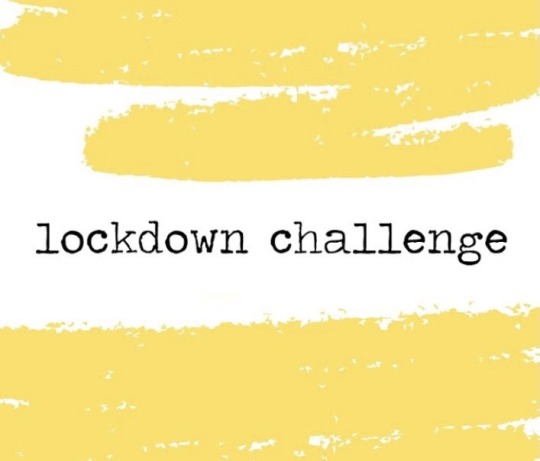
heya! as i’ve posted this morning, i’ve prepared a #lockdownstudyblr challenge for anyone who has to stay inside! i’m lucky enough to go to work every morning but i figured this challenge could help you guys stay productive and help us to motivate ourselves all together! here’s the prompt:
x day one : your to-do list
x day two : what are you studying at the moment ?
x day three : favourite subject
x day four : your dream job
x day five : show your notes!!
x day six : study routine
x day seven : your favourite motivation quote
x day eight : why did you join the studyblr community (explain your tumblr url) ?
x day nine : one thing you want to learn during this lockdown
x day ten : favourite stationery
x day eleven : favourite book
x day twelve : show us your desk/room!
x day thirteen : what’s your method to be productive ?
x day fourteen : who’s your favourite studyblr ?
x day fifteen : did you reach the goals you set for November ?
i’ve done fifteen days for now, i’ll see if you guys are interested for more if we’re still stuck at home !
the challenge will start tomorrow (12th of November) but you can start whenever you want :)
feel free to tag #lockdownstudyblr and #heyaly if you decide to do it ♥
stay safe and take care !
- aly
94 notes
·
View notes
Text

studied particles and made a list of vocab that’ll be handy in my beginner conversations 🌸
#you can’t tell but the brightness is on -37#langblr#nihongo#vocab list#google spreadsheets#spreadsheet#japanese#hiragana#kanji#list#study#organization#studyblr#studyspo
12 notes
·
View notes
Text
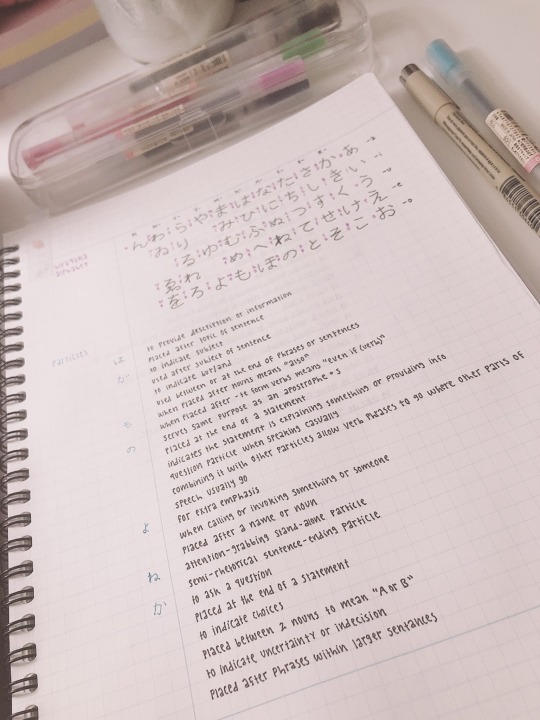
evening hiragana and particle studies ! ☕️
#this is my first post I’m so awkward skjdhdjd#notebook#notes#studyblr#studyspo#langblr#nihongo#japanese#learning#hiragana#particles#desk#pens#stationery#stationary#taeastudy#aesthetic#my post
5 notes
·
View notes
Text
From Beginner to Intermediate: an intense plan for advancing in language
Introduction
I've studied Spanish at school for 3 years and now I'm at a low B1 level. I can actually understand pretty well while listening or reading but I can't communicate fluently.
This plan will include vocabulary build up, some grammar revision, a lot of listening, reading and writing. And could be used for the most languages, not only Spanish.
Plan
Every day:
Conjugate one verb in present, past and future tenses
Make a list about 10 - 30 words long
Create flashcards with them and start learning them (I use Quizlet for flashcards)
Revise yesterday's set of flashcards
2-3 times a week:
Read an article or a few pages from a book
Write a few sentences about anything in your target language
Listen to one episode of podcast (at least one)
Once a week or every two weeks:
Watch a movie in your target language, preferably animated movie as the language used there is easier. You can watch with subtitles
Grammar exercises
Translate some short text
Once a month:
Write something longer, like an essay or report, on chosen topic
Additionally:
Talk to yourself, to your friends, to your pets
Text with someone
Look at the transcription while listening to the podcast for second time
Repeat what you hear (in podcast or movie)
Check words you don't know from the listening and reading
Read out loud
Listen to music in your target language - you can even learn the text and sing along
Watch YouTube in your target language
Change your phone language to the one you're learning
Think in you target language!!!
***This is very intense plan for self-learners, you don't have to do all of these things in the given time. Adjust it to your own pace. I'll try to stick to this, if I have enough time.***
#self study#learning plan#japanese#nihongo#language learning#schedule#plan#calendar#studyblr#studyspo#langblr
10K notes
·
View notes
Photo

1K notes
·
View notes
Note
Hello! I'm sorry if this has been asked before, but how do you become proficient at handling conversations in Japanese/handling grammar very well? I read your post on the JLPT, and it addressed issues I have been tip toe-ing around--indeed, passive actions such as listening or reading are easier than the active ones. How did you go about that? Did you write a bunch of sentences daily? Did you have a conversation partner? What would you rec. to someone who lives outside Japan? Thank you!
This is an excellent question, and one that I get asked a lot irl by Japanese people in particular. Let’s talk about gaining fluency and the ways we can go about it!
How to Gain Fluency in Japanese (and Other Languages)

Speaking Fluency versus Accuracy
Language proficiency is divided into two separate categories:
Fluency: Although there are no widely agreed-upon definitions or measures of language fluency, someone is typically said to be fluent if their use of the language appears fluid, or natural, coherent, and easy as opposed to slow, halting use. In other words, fluency is often described as the ability to produce language on demand and be understood.
Accuracy: Correctness of language use, especially grammatical correctness and word choice.
By the above definitions, a “fluent” speaker may make grammatical mistakes, but they can speak without having to stop and think too much about conjugations, word choice, etc.
An “accurate” speaker can speak with nearly zero grammatical/word choice mistakes. However, the speed of their utterances isn’t generally taken into account, so it could take an “accurate” person twice as long to articulate the same idea as a “fluent” person.
Ideally, you need to strike a good balance between these two qualities when speaking. I have a boss, God bless him, who is 100% fluency and 0% accuracy and…man is it hard to understand what he’s saying sometimes, but he can generally get his point across just barely. I have another coworker who is 100% accuracy and takes about 3 minutes to form a sentence because he wants it to be perfect.

How to Increase Speaking/Writing Accuracy
First, let’s talk about the easiest thing to improve, which is accuracy. It’s also (in my opinion) the least fun thing to improve, because it means grammar books and vocabulary memorization.
You can only use a language accurately if you know what is correct and what is incorrect, and you can only learn that by studying grammar and vocabulary (or if you’re a native speaker and picked it up innately, you lucky bastard).
So here’s some things you can do to increase your accuracy:
For example, if you’re having a hard time using the passive, you need to review that part of your textbook and find some exercises to drill it into your head.
Say the correct thing aloud. Lots. Sometimes I just walk around my apartment and narrate everything I see/do like a crazy person, but that’s good practice.
Write example sentences using the grammar you’re struggling with and say them aloud too.
There’s a bunch of cool apps that connect you with native speakers that can help correct you too! I used to use HelloTalk, I think.
If you’re a creative soul, when I was studying for the JLPT, I took 1 grammar point and 5 vocabulary words from my JLPT study books and used them to write a 2-page short story about the adventures of ネギ, a stray black cat that smelled like green onions because she napped in an onion field. Then I had a Japanese friend check it over for me and mark mistakes. I hand-wrote them to improve my abysmal handwriting at the same time. It was really fun! I sometimes think about doing it again just for funsies.
When someone corrects you, don’t feel like your entire life is over and you’re a failure and you’ll never get it right haha. I’ve seen people fall into that hopeless mindset, and that’s just nonsense. It’s a good opportunity for learning and nothing more! Say the correct thing you’ve just been taught out loud, then write it down if you can. And, if possible, find a chance to use it in conversation asap.

How to Increase Speaking/Writing Fluency
Now this is the hard one. Especially for those learners who do not have native speakers nearby.
I’m going to be dead honest with you. I started formally studying Japanese at uni, and I had a Japanese roommate/best friend since year one. I had a 4.0 GPA in my Japanese classes (and only my Japanese classes lol) because I was and still am a MEGA NERD about it.
…But it wasn’t until I studied abroad in Japan my 4th year of uni that I gained fluency.
There are a lot of things that can hold us back from fluency. An interesting thing I’ve noted is that Foreign Language is perhaps the only subject in which a student’s personality can directly affect their progress. To gain fluency, you have to go forth and speak, but if you are naturally a shy person, that is going to hinder you. If you are the kind of person who takes mistakes/failures poorly, you will be less likely to take risks and try to say harder sentences. In contrast, you can get full marks in math regardless of the above personality traits.
I’m not saying that you have to be an outgoing explosion of a human being in order to gain fluency. But what I am saying is that you have to be willing to seek out conversations, and you have to be willing to take chances. Get out of your comfort zone. Use that new word you picked up the other day. Try to explain something that is difficult for you.
My problem was that, while I lived with a native speaker who would have happily taught me anything I asked, her English proficiency was much higher than my Japanese proficiency. And when I struggled to say something in Japanese, I’d fall back onto English. And when she told me something I didn’t understand in Japanese, she’d repeat it in English instead of Japanese, because that was easier for us both. The same thing happened when I was in Japanese class as well. I always had the assurance that I could fall back on English.
But when I elected to study abroad in Japan for 3 months, I knew that this was my big chance. So on the host family form in the “other requests” area, I wrote that I specifically wanted a host family that could not speak English. I was setting fire to my crutches, and I was scared but excited to see them burn.
By the end of my three months in Japan, I had gone from “Chotto matte kudasai” and needing a minute to form my reply, to “Okay, yeah I see that movie too and I liked the action scenes, but I didn’t care for the story little.” (I’ve underlined mistakes that I would have made in Japanese, to show you that I sacrificed some accuracy to obtain higher fluency.)
So, in short, the easiest and quickest way to increase your spoken fluency is to throw away all the crutches you can and use the language as much as possible. Every single day. Even if you’re just having an imaginary conversation with yourself! And like I said, there are a bunch of cool apps that connect you with Japanese people who want to learn English and you can do language exchanges with them. I had a lot of fun with those in the past.
As for increasing writing fluency…well. That’s a tough question with Japanese, because I can type Japanese at like 100 wpm, but my Japanese handwriting fluency is at a 10/100. I can read and type at the level of a native Japanese high school student, but I can only write the kanji that 7 year old can write. That’s no exaggeration.
The big reason for that dichotomy is that my work is paper-free. 100% of my work is done on screen, so about the only time I have to write out something is when I’m filling out a form, which includes my name (katakana), address, and maybe occupation.
If you want to increase your Japanese handwriting speed, just keep on writing. Write those little short stories about ネギ like I did, or find some writing prompts (I just started a side-blog with writing prompts yesterday btw) or keep a little diary. Make opportunities to write.
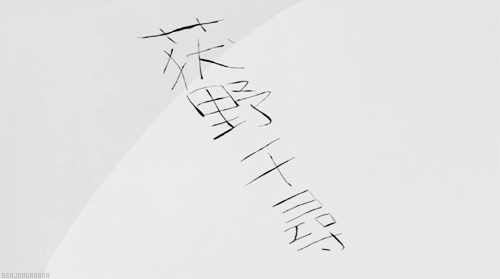
How to Have Nice Handwriting in Japanese
Okay, full disclaimer: I am the absolute LAST person qualified to talk about this, because I have awful handwriting in Japanese.
Unless you have prior experience with a different language that uses kanji, or you lack the keen eye of an artist, you will likely struggle to develop neat handwriting.
Personally, I really like using this app called Japanese Kanji Sensei. It’s on Android (not sure about iOS), and if you pay just a few bucks you can make your own kanji sets and stuff. Anyways, it will show you how to write the characters prettily. It gives you a good frame of reference for what nice, pencil/pen-written characters (versus calligraphy characters). It has hiragana and katakana on it too!

I get a stylus and write out the characters on this app for the muscle memory, so my hands remember the sensation of writing a certain character. (The muscle memory is different if you only use your fingertip.) This muscle memory and repetition is how Japanese people learn how to internalize kanji as well. I really enjoy and recommend this app. I’m sure that there are others out there like it too.
Summary
TL;DR: Review your textbooks, take risks, use every resource available or make your own, and just have fun with it! 💗
2K notes
·
View notes